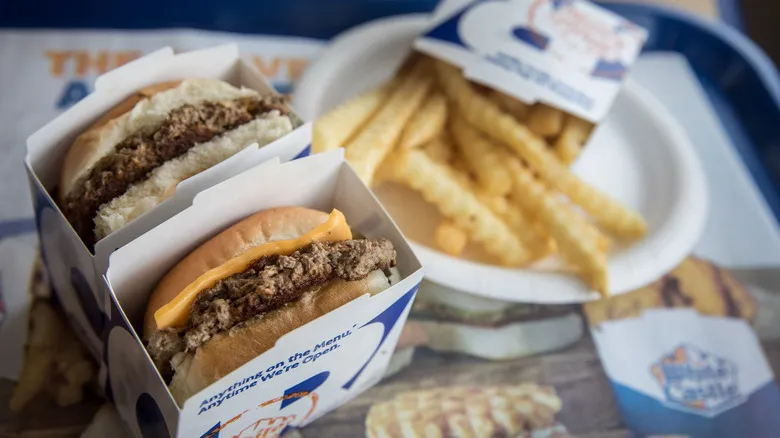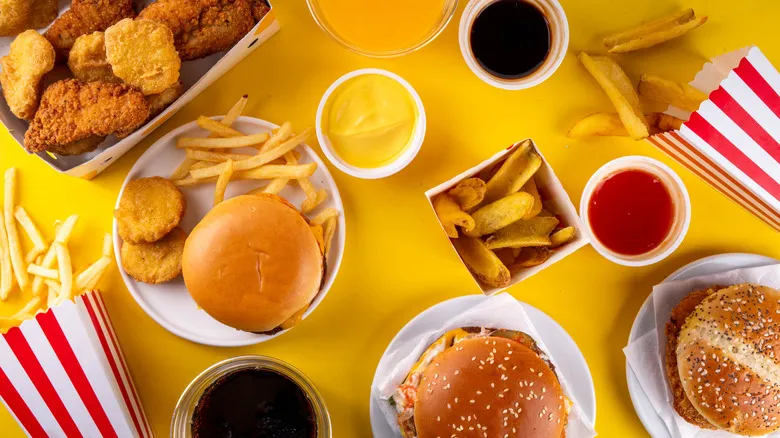American fast food before the interstate system

The concept of fast food in the United States, as we know it today, truly emerged in the 1920s. Although there are several contenders for the title of "first fast food restaurant," White Castle is the most widely recognized chain, renowned for its square sliders. This establishment offered affordable, quality food in a manner that was innovative for its time. A key factor in White Castle's success was its role in transforming the perception of hamburgers. Before their rise, burgers were often associated with low-quality or spoiled meat scraps and were typically sold at fairs and circuses, rather than being considered suitable for family dinners. By serving higher-quality food and, importantly, making the cooking and preparation areas visible to patrons, White Castle successfully challenged these negative stereotypes.
When the first McDonald's opened in California in the 1940s, it aimed to refine the model established by White Castle. As fast food chains began to gain popularity and streamline their operations, their presence in American culture remained somewhat limited. These restaurants were mainly found in suburban areas and were particularly thriving in the Midwest. However, the introduction of the interstate highway system in the 1950s and 60s created significant opportunities for the expansion of fast food across the nation.
The interstates changed what travel food looked like

Before President Dwight D. Eisenhower introduced the interstate system in the 1950s, the appearance of towns across the United States was quite different. Small towns were typically situated along railway lines, and their surrounding communities depended on the traffic generated by these railroads for their survival. Long-haul truck drivers traveling on the two-lane highways characteristic of the old interstate system would often stop in these towns, becoming familiar with the local cuisine. For those on road trips, following such a truck driver was a dependable way to discover a good place to eat.
However, with the establishment of the expanded interstate system, many of these new roads began to bypass the small towns that had once served as essential stops for long-distance travelers. The old mom-and-pop diners became less known to the well-traveled and more difficult to access, often requiring significant detours. As a result, smaller towns and local eateries began to face challenges. Meanwhile, the new interstate exits and interchanges created opportunities for fast food chains to cater to hungry, time-pressed travelers.
As the interstate system became more prevalent and car culture evolved, so did the eating habits of Americans. Many consumers embraced the notion of staying on the move rather than making longer stops at roadside restaurants like Howard Johnson's, and fast food chains were eager to meet this demand. These chains began to shift away from carhops—servers who would take orders while customers ate in their cars—and adopted a standard service model where customers would simply grab their food and continue driving.
Why fast food thrived around the United States' interstates

Fast food flourished along the interstate system for several reasons, with convenience being a key factor. The ability to quickly stop for gas and a meal in one go was incredibly appealing, whether you were traveling solo or needed to feed a family on a budget. Although many fast food chains originated in California, they found great success in the Midwest, as long-distance travelers often passed through this region. The connection between fast food and gas stations is exemplified by KFC's founder, Colonel Sanders, who sold fried chicken to motorists while they refueled. This demand for convenience spurred further innovations, such as Wendy's introduction of the "pick-up window" in 1971, which revitalized the carhop concept and catered to diners' desire to keep moving.
However, the most significant factor contributing to the success of fast food was its consistency. No matter where you were in the country, spotting a familiar fast food chain sign meant you could expect a similar meal to what you’d find at any other location. The speed of interstate travel shifted the focus from adventure and exploration to simply getting from one destination to another. As a result, the availability of reliable and convenient food options became a major advantage, greatly benefiting the fast food industry.
Recommended

Superman Ice Cream Is A Mashup Of Mystery Flavors And A Midwestern Staple

Got Milk? The History Of Dairy's Most Notorious Marketing Campaign

How Did Ube Become So Popular?

Secrets Of Baskin-Robbins You'll Wish You Knew Sooner
Next up

